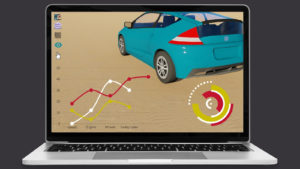The task of renewing and upgrading water infrastructure is never-ending. Asset management may help a utility get the most out of its money, both in capital and operations and maintenance.
Asset management delivers vital information on capital assets and investment timing to utility managers and decision-makers. All essential elements in asset management are inventorying crucial assets, evaluating their health and performance, formulating plans to maintain, repair, and replace assets, and funding these activities. Asset management is a scalable method that may be used in any system.
Asset management includes putting in place a long-term plan to preserve these systems and their services, whether a tiny drinking water system servicing a lot of consumers or the drinking water systems of the world’s largest cities.
The Role Of Water Asset Managers
Many water utility managers in Australia today are faced with reducing their excessively high volumes of non-revenue water. Nonrevenue water reduces revenue, money for investment, productivity, and service delivery, but it also raises the cost of provided water.
To encounter the expectations of households, commerce, and industry, water utility managers in Australia must: increase service levels closer to 24 hours a day, seven days a week; expand distribution networks to cope with population growth; finance the timely replacement and maintenance of existing assets; and treat heavily polluted water to meet the expectations of households, commerce, and industry.
As a basis for successful asset management, utility managers in Australia must build an asset management policy, devise an implementation and monitoring strategy, get a full knowledge of the state of all their assets, and identify the possible risks and repercussions if they fail.
Challenges Faced By Water Asset Managers
Governments, municipalities, owners, administrators, and operators of water systems worldwide are often faced with the issue of doing more with less money expanding and sustaining safe and dependable services with ageing water assets and limited budgets. This complicates determining where to spend next to maximise the utilisation of existing assets or even where the highest potential of asset failure and risk and the consequences will occur.
External forces affecting the industry as a whole, such as increased public demand for better service levels and lower costs, regulatory compliance, population growth, larger gaps between projected water supplies and water demands, business transparency, and megatrends in environmental sustainability, climate change, and infrastructure resiliency, all add to the complexities.
Many utility executives see the value of asset management and are committed to it, but they encounter similar challenges when putting one in place.
- There is no mandate. Asset management takes a lower priority when no state or federal duty
- Insufficient financial resources. This is unsurprising, given that all utilities are under pressure to perform more with fewer resources
- Human resources are scarce. Small teams have already maintained hundreds of kilometres of pipeline infrastructure, pumping stations, and treatment plants. In addition, retirements have resulted in a loss of institutional expertise
- Technology is constantly evolving. Utilities may lack the most up-to-date tools and expertise to regularly operate and upgrade their systems
- Asset management lacks leadership or a champion. It is unlikely to be completed without the supervision of someone who is invested in asset management
Solutions For the Biggest Challenges
Now water utility managers in Australia can optimise water infrastructure with intelligent technologies, including Artificial Intelligence, Algae detection, CCTV and laser, Digital Twin, Industrial Internet of Things, Geospatial Information, Predictive and Prescriptive Analytics, and sensors.
The water catchment solution is unlike any other catchment technology solution since it combines new technologies, enhanced features, and analytical capabilities. It can offer an interactive and intuitive display of your catchment infrastructure’s health, performance, potential, and imminent catchment events. This solution is the one-to-all solution for managing your catchment infrastructure, with modern technologies like a digital twin, GIS maps, AI-driven protocols and algorithms, simulation technologies, weather and disaster prediction tools, and many more. Statutory monitoring screens for catchment infrastructure, dam modelling, sub-catchment health monitoring tools, rainfall-runoff simulation, scalable dashboards, risk management systems, risk control systems, and catchment GIS maps are all available as part of the catchment solution.







